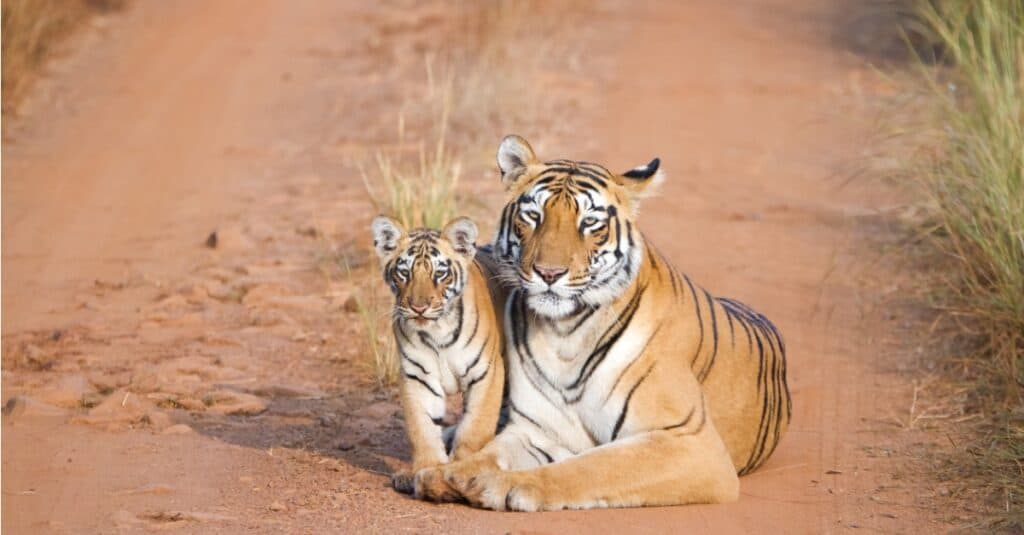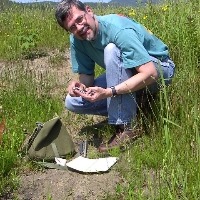Tigers in the wild can live up to 15 years. In captivity, their lifespan is about 20 to 26 years. It can be expected that when tigers are privately owned or kept in zoos, their lifespan is greatly increased. This is because they no longer have to worry about finding food or being exposed to harsh weather patterns.
Let’s take a look at some of the oldest known tigers:
- Guddu, the world’s longest-living male Bengal tiger, has died at Kanpur Zoo in India at the age of 26.
- Before Gudu, the record was held by Flavio and Ramhuhu, who both died at the age of 24.
- The world’s oldest tigress, the Machali tigress, has died at the age of 20.
Now that we have a better idea of how tigers live, let’s take a look at their average lifespan.
Average Lifespan of a Tiger
How did a tiger cub turn from a small and cute animal into a fierce hunter? Let’s take a look at the average lifespan of a tiger.
First, tigers have four life stages: newborn, cub, youth and adult.
newborn tiger
Newborn tiger cubs are called cubs. When they are born, the cubs weigh between two and three pounds on average. For the first eight weeks of their lives, they will be hidden and protected in the cozy den that their mother built before they were born. They are cared for by their mothers for the first few weeks of life. At about six to eight weeks of life, the mother will begin introducing meat to her pups.
child

© iStock.com/Rajkumar Natarajan
When the cubs are two months old, they are allowed to leave the safety of the den. Over the next few months, they will spend time learning how to hunt independently. This is achieved through observation and practice hunting. They are usually able to hunt on their own by 18 months of age. Nevertheless, both males and females remain with their mothers until about 2.5 years of age. Tiger cub mortality is quite high. Fewer than half of all pups born live to be two years old.
young adult
Once they reach puberty, tigers abandon their mothers forever. Although they are no longer in a relationship, females will choose territories closer to their mothers. Males have to travel farther to establish territories.
adulthood
By the time a tiger reaches adulthood, he or she has established his territory and is looking for a mate. Adult tigers will only spend time together when mating or hunting the same prey.
A tigress reaches sexual maturity between the ages of three and four, when she is likely to give birth to her first litter.
Common Factors Affecting Tiger Lifespan
Today, the most serious threats to tiger populations are habitat loss/fragmentation and poaching. The IUCN Red List lists tigers as endangered. As of 2015, the global wild tiger population was estimated to range from 3,062 to 3,948 adults, with most of the population living in small, isolated enclaves. Other estimates of tiger populations now suggest they number more than 5,000 tigers in the wild.
Tigers have been overhunted by humans for their fur and other body parts used in traditional medicine. Tiger bone has been used in traditional Chinese medicine for thousands of years to relieve anxiety and treat ulcers, bites, rheumatism, convulsions and burns.
Tiger habitat has also been severely depleted as people develop land for agriculture and timber. When land is changed for reasons such as agriculture, logging and livestock grazing, habitat is lost and fragmented, negatively impacting tigers’ natural habitat.
There is optimism, though, that the big cats could make a comeback in Russia’s Siberian region. Siberian tiger numbers are increasing, according to the latest data on the subspecies’ homeland in Russia. A decade ago, conservationists estimated there were 423-502 Amur tigers in Siberia. However, the Russian government and WWF said last month that the number of tigers had increased to 480-540, with an estimated 100 cubs.

I am broadly interested in how human activities influence the ability of wildlife to persist in the modified environments that we create.
Specifically, my research investigates how the configuration and composition of landscapes influence the movement and population dynamics of forest birds. Both natural and human-derived fragmenting of habitat can influence where birds settle, how they access the resources they need to survive and reproduce, and these factors in turn affect population demographics. Most recently, I have been studying the ability of individuals to move through and utilize forested areas which have been modified through timber harvest as they seek out resources for the breeding and postfledging phases. As well I am working in collaboration with Parks Canada scientists to examine in the influence of high density moose populations on forest bird communities in Gros Morne National Park. Many of my projects are conducted in collaboration or consultation with representatives of industry and government agencies, seeking to improve the management and sustainability of natural resource extraction.











